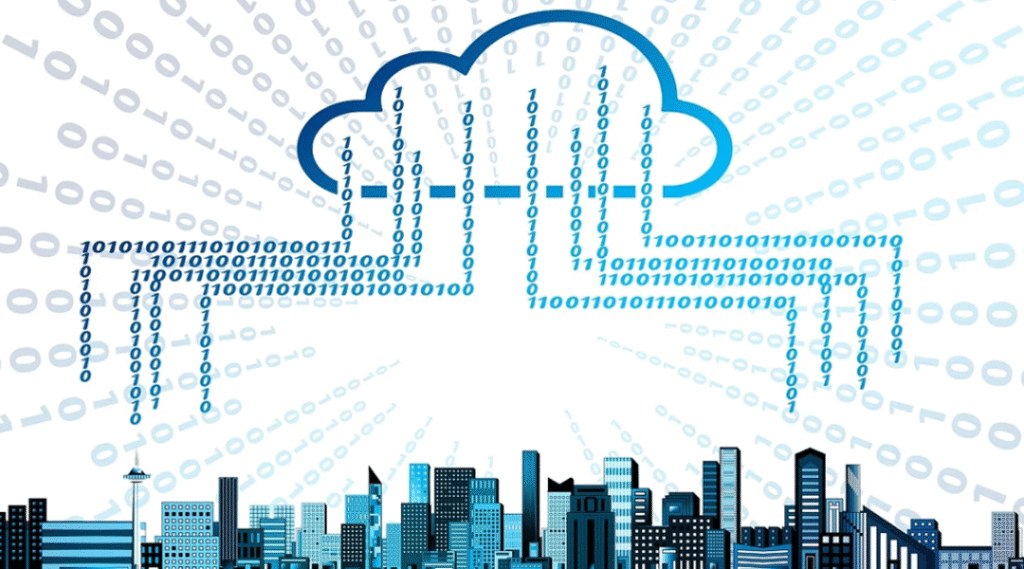As the world urbanizes at an unprecedented pace, cities face escalating demands on infrastructure, resources, and public services. Today’s megacities grapple with traffic congestion, energy shortages, aging utilities, and environmental pressures. The convergence of Artificial Intelligence (AI) and fifth-generation wireless networks (5G) offers a transformative toolkit—enabling urban environments to become dynamic, responsive, and resilient. By marrying AI’s analytical prowess with 5G’s ultra-fast, low-latency connectivity, tomorrow’s smart cities will deliver smarter mobility, cleaner energy, safer streets, and richer citizen experiences.
At its core, AI equips city authorities with the ability to turn vast, real-time data streams into actionable intelligence. Through machine learning and advanced analytics, AI systems continuously ingest data from traffic cameras, environmental sensors, public-transit logs, and utility grids. This allows:
- Real-Time Monitoring: AI models detect traffic bottlenecks, air-quality spikes, or public-safety incidents as they unfold. This real-time awareness helps dispatch resources—traffic wardens, ambulances, or maintenance crews—before delays compound.
- Predictive Maintenance: Rather than waiting for streetlights to fail or water mains to burst, AI analyzes historical performance trends and flags equipment at risk of malfunction. Proactive repairs reduce service disruptions, extend asset lifespans, and lower maintenance budgets.
- Adaptive Resource Allocation: AI optimizes streetlight brightness based on pedestrian and vehicle counts, and automatically adjusts waste-collection schedules by monitoring bin-fill levels. Such fluid responsiveness drives operational efficiency and reduces waste.
By embedding AI into everyday processes, cities transition from reactive firefighting to proactive stewardship—anticipating challenges and continually fine-tuning services for maximum impact.
5G: The High-Performance Conduit for Urban Connectivity
While AI provides decision-making intelligence, 5G delivers the robust communication fabric needed to execute those decisions at scale. Key attributes include:
- Ultra-Low Latency: With round-trip times under 10 milliseconds, 5G supports mission-critical applications like autonomous shuttles, remote medical consultations, and real-time emergency dispatch.
- Gigabit-Level Speeds: High bandwidth accommodates dense streams of high-definition video, LIDAR, and telemetry from thousands of IoT sensors, ensuring AI systems have the highest-fidelity data.
- Massive Device Density: Engineered to connect up to one million devices per square kilometer, 5G networks easily support the myriad smart meters, environmental monitors, and connected vehicles in modern metropolises.
- Network Slicing: 5G can partition its infrastructure into isolated “slices” with dedicated performance characteristics. For instance, public-safety agencies can secure a slice that guarantees uninterrupted bandwidth and priority handling—even during large-scale events.
Together, these capabilities create a resilient, high-capacity communications backbone—empowering city services to interoperate seamlessly and scale as urban demands grow.
The Synergy: Edge Intelligence Meets Ultra-Fast Transport
The true magic unfolds when AI analytics run at the network edge, close to data sources, and leverage 5G’s high-speed links to coordinate citywide responses. By deploying compact edge servers near critical intersections or utility substations, cities can:
- Perform Localized AI Inference: Milliseconds matter when detecting a gas leak or re-sequencing traffic signals. Edge AI slashes the delay of sending raw data to distant cloud servers.
- Enable Collaborative Orchestration: Through 5G, edge nodes communicate insights across neighborhoods—synchronizing smart streetlights, traffic signals, and emergency alerts for a unified urban response.
- Preserve Bandwidth and Privacy: Preprocessing data locally reduces the volume sent over the network and keeps sensitive information—like individual vehicle movements—on site, enhancing privacy protections.
This edge-to-edge interplay ensures that smart-city applications operate with minimal latency, maximum reliability, and robust data governance.
Real-World Applications Transforming Urban Life
- Intelligent Traffic Management
AI algorithms fuse data from connected vehicles, roadside radar, and pedestrian sensors to predict congestion. 5G ensures that new signal-timing plans propagate instantly across intersections—shortening commutes and lowering greenhouse gases. - Next-Generation Energy Grids
Smart meters and distributed renewables transmit performance and demand data over 5G. AI then balances loads, dispatches backup generation, and shifts usage to off-peak hours—stabilizing supply and preventing blackouts. - Public Safety and Emergency Response
High-resolution, 5G-connected cameras equipped with AI-driven object detection identify hazards—unattended bags, flash floods, or crowd surges—and automatically alert first responders, trimming response times. - Environmental Quality Monitoring
An array of compact air-quality, noise, and water sensors streams data through 5G to nearby edge servers. AI processes these inputs to pinpoint pollution sources and triggers targeted mitigation—fostering healthier communities.
Navigating Implementation Challenges
Smart-city deployments of AI and 5G do encounter hurdles:
- Data Security & Privacy: Robust encryption, access controls, and transparent policies are essential to protect citizen data and maintain public trust.
- Energy Consumption: While 5G base stations and edge servers can draw significant power, integrating renewable energy sources and leveraging energy-efficient hardware help minimize environmental footprints.
- Interoperability & Standards: A diverse ecosystem of sensors, platforms, and vendors necessitates open-standard frameworks to ensure seamless communication and avoid vendor lock-in.
- Digital Equity: Ensuring underserved neighborhoods have access to the benefits of smart-city systems requires inclusive planning and targeted investment.
By addressing these considerations proactively, municipal leaders can unlock the full potential of AI and 5G without compromising security, sustainability, or social equity.
Charting the Path Forward
As 5G-Advanced networks roll out—with embedded AI/ML capabilities, self-optimizing resource allocation, and enhanced security—cities will enter a new era of sophistication. Federated learning techniques will allow AI models to evolve collaboratively across decentralized edge nodes, preserving privacy while sharpening predictive accuracy. Meanwhile, private 5G networks within campuses and industrial zones will serve as innovation testbeds, refining use cases before they scale citywide.
The alliance of AI and 5G heralds a future where cities become living, learning entities—continuously adapting to the needs of their residents. By embracing these technologies with thoughtful governance, strategic investment, and citizen-centric design, urban centers can evolve into smarter, safer, and more sustainable habitats. The blueprint for tomorrow’s cities is clear; the challenge now is to build them together.
More for AI and 5G:
Wiring Tomorrow’s Workforce: Integrating Smart IoT, 5G, Cloud, and AI to Forge a Robust Robot World
The Convergence of AI, 5G, and Smart IoT: Shaping the Future of Urban Traffic Management
Decentralizing the Cloud: The Rise of Edge Computing and Micro Data Centers
As for in-depth insight articles about AI tech, please visit our AI Tech Category here.
As for in-depth insight articles about Auto Tech, please visit our Auto Tech Category here.
As for in-depth insight articles about Smart IoT, please visit our Smart IoT Category here.
As for in-depth insight articles about Energy, please visit our Energy Category here.
If you want to save time for high-quality reading, please visit our Editors’ Pick here.



